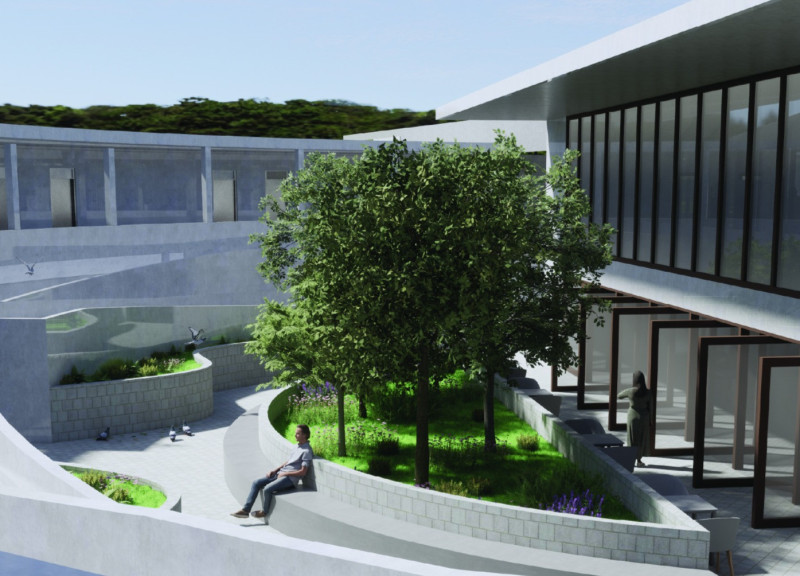5 key facts about this project
The foundation of the project lies in its innovative approach to spatial organization and material selection. The layout is characterized by an open-plan configuration, allowing for a seamless flow between different spaces while maximizing natural light. This design choice promotes a sense of openness and inclusivity, enabling occupants to engage with their environment in a more meaningful way. The careful arrangement of communal and private areas emphasizes a balanced lifestyle, facilitating both active engagement in shared spaces and quiet retreat when desired.
Integral to the project are the materials chosen for construction, each selected for its practical and aesthetic attributes. Reinforced concrete provides a robust framework, ensuring the structure’s durability and resilience. Extensive glass facades not only offer transparency but also diminish the barriers between indoor and outdoor environments. This connection fosters an enhanced appreciation of the surrounding landscape while allowing for natural light to permeate the interiors. The warmth of timber accents brings an organic quality to the design, softening the overall aesthetic while creating a welcoming atmosphere. The presence of metal cladding introduces a contemporary edge and serves as a protective layer against the elements, further enhancing the building's longevity.
Sustainability is a core principle woven into the fabric of the project. Solutions such as green roofs and solar panels illustrate a commitment to energy efficiency and ecological responsibility. These elements are thoughtfully incorporated into the architectural design, not only serving functional purposes but also enhancing the building's visual character. By employing passive solar strategies, including strategically placed overhangs, the design minimizes heat gain while maximizing daylight access, demonstrating an effective balance between comfort and environmental stewardship.
A unique aspect of the project is its response to the local geographical and cultural context. The architectural design pays homage to regional building traditions while embracing modern techniques and materials. This sensitivity to context not only reflects an appreciation for the site’s heritage but also generates a sense of place, inviting users to engage with the history and character of their surroundings.
The project illustrates a sophisticated play of volumes and forms, creating a dynamic visual narrative that evolves throughout the day as light shifts across the façade. The architectural design fosters a sense of connection among occupants and their environment, reflecting a holistic approach to living and working. This emphasis on interaction is further echoed in the communal spaces that encourage collaboration and engagement, ultimately enhancing the overall user experience.
To fully appreciate the intricacies of this architectural endeavor, readers are encouraged to explore the project presentation, which offers additional insights into the architectural plans, architectural sections, architectural designs, and architectural ideas that shape this remarkable project. Observing these elements will provide a deeper understanding of the design thought process and the considerations that led to the final outcome. This project stands as a testament to the potential of thoughtful architecture to create spaces that are not only functional but also enrich the lives of those who inhabit them.


























